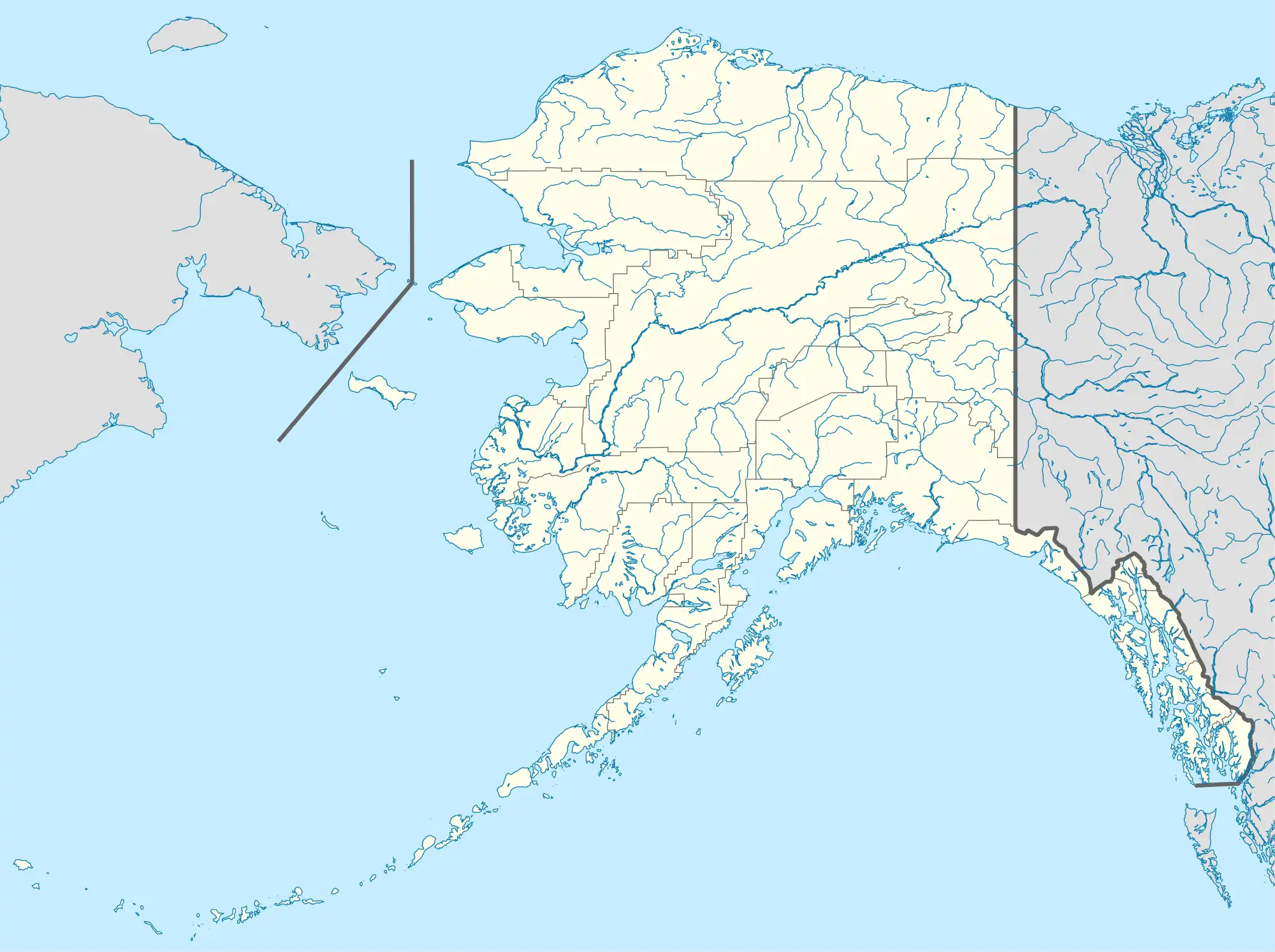Ridgeway, Alaska
Ridgeway is a census-designated place (CDP) in Kenai Peninsula Borough, Alaska, United States. At the 2020 census the population was 2,136, up from 2,022 in 2010.[2][3]
Ridgeway, Alaska | |
|---|---|
 Ridgeway | |
| Coordinates: 60°31′11″N 151°3′39″W | |
| Country | United States |
| State | Alaska |
| Borough | Kenai Peninsula |
| Government | |
| • Borough mayor | Peter Micciche |
| • State senator | Jesse Bjorkman (R) |
| • State reps. | Ben Carpenter (R) Justin Ruffridge (R) |
| Area | |
| • Total | 17.68 sq mi (45.80 km2) |
| • Land | 16.79 sq mi (43.48 km2) |
| • Water | 0.90 sq mi (2.32 km2) |
| Elevation | 187 ft (57 m) |
| Population (2020) | |
| • Total | 2,136 |
| • Density | 127.23/sq mi (49.13/km2) |
| Time zone | UTC-9 (Alaska (AKST)) |
| • Summer (DST) | UTC-8 (AKDT) |
| Area code | 907 |
| FIPS code | 02-65345 |
| GNIS feature ID | 1866972 |
Geography
Ridgeway is located on the western side of the Kenai Peninsula at 60°31′11″N 151°3′39″W (60.519682, -151.060911).[4] It is bordered to the northwest by the city of Kenai and to the south by the city of Soldotna, the borough seat. It is bordered to the east, across Soldotna Creek, by the unincorporated Sterling CDP, and to the west, across the Kenai River, by the Kalifornsky CDP.
According to the United States Census Bureau, the Ridgeway CDP has a total area of 17.7 square miles (45.8 km2), of which 16.8 square miles (43.5 km2) are land and 0.89 square miles (2.3 km2), or 5.13%, are water.[3]
Demographics
| Census | Pop. | Note | %± |
|---|---|---|---|
| 1990 | 2,018 | — | |
| 2000 | 1,932 | −4.3% | |
| 2010 | 2,022 | 4.7% | |
| 2020 | 2,136 | 5.6% | |
| source:[5] | |||
Ridgeway first appeared on the 1990 U.S. Census as a census-designated place (CDP).
As of the census[6] of 2000, there were 1,932 people, 715 households, and 536 families residing in the CDP. The population density was 116.0 inhabitants per square mile (44.8/km2). There were 938 housing units at an average density of 56.3 per square mile (21.7/km2). The racial makeup of the CDP was 87.8% White, 0.4% Black or African American, 4.3% Native American, 0.8% Asian, 0.1% Pacific Islander, 1.6% from other races, and 5.1% from two or more races. 2.5% of the population were Hispanic or Latino of any race.
There were 715 households, out of which 39.3% had children under the age of 18 living with them, 62.5% were married couples living together, 9.5% had a female householder with no husband present, and 24.9% were non-families. 18.9% of all households were made up of individuals, and 4.2% had someone living alone who was 65 years of age or older. The average household size was 2.70 and the average family size was 3.09.
In the CDP, the population was spread out, with 29.5% under the age of 18, 6.7% from 18 to 24, 26.5% from 25 to 44, 31.0% from 45 to 64, and 6.4% who were 65 years of age or older. The median age was 38 years. For every 100 females, there were 98.6 males. For every 100 females age 18 and over, there were 99.3 males.
The median income for a household in the CDP was $50,625, and the median income for a family was $56,985. Males had a median income of $51,488 versus $36,786 for females. The per capita income for the CDP was $23,225. About 7.4% of families and 9.4% of the population were below the poverty line, including 11.6% of those under age 18 and 15.5% of those age 65 or over.
References
- "2020 U.S. Gazetteer Files". United States Census Bureau. Retrieved October 29, 2021.
- "2020 Census Data - Cities and Census Designated Places" (Web). State of Alaska, Department of Labor and Workforce Development. Retrieved October 31, 2021.
- "Geographic Identifiers: 2010 Demographic Profile Data (G001): Ridgeway CDP, Alaska". U.S. Census Bureau, American Factfinder. Retrieved January 23, 2019.
- "US Gazetteer files: 2010, 2000, and 1990". United States Census Bureau. February 12, 2011. Retrieved April 23, 2011.
- "Census Of Population And Housing". U.S. Census Bureau. Retrieved April 21, 2011.
- "U.S. Census website". United States Census Bureau. Retrieved January 31, 2008.
